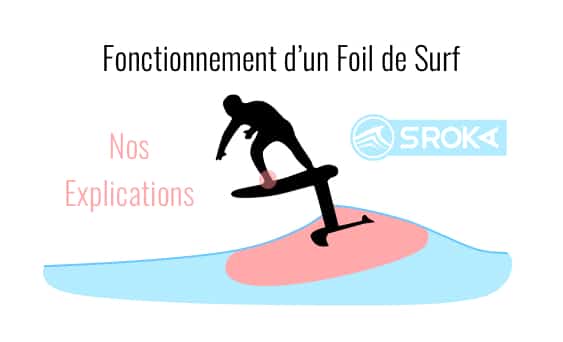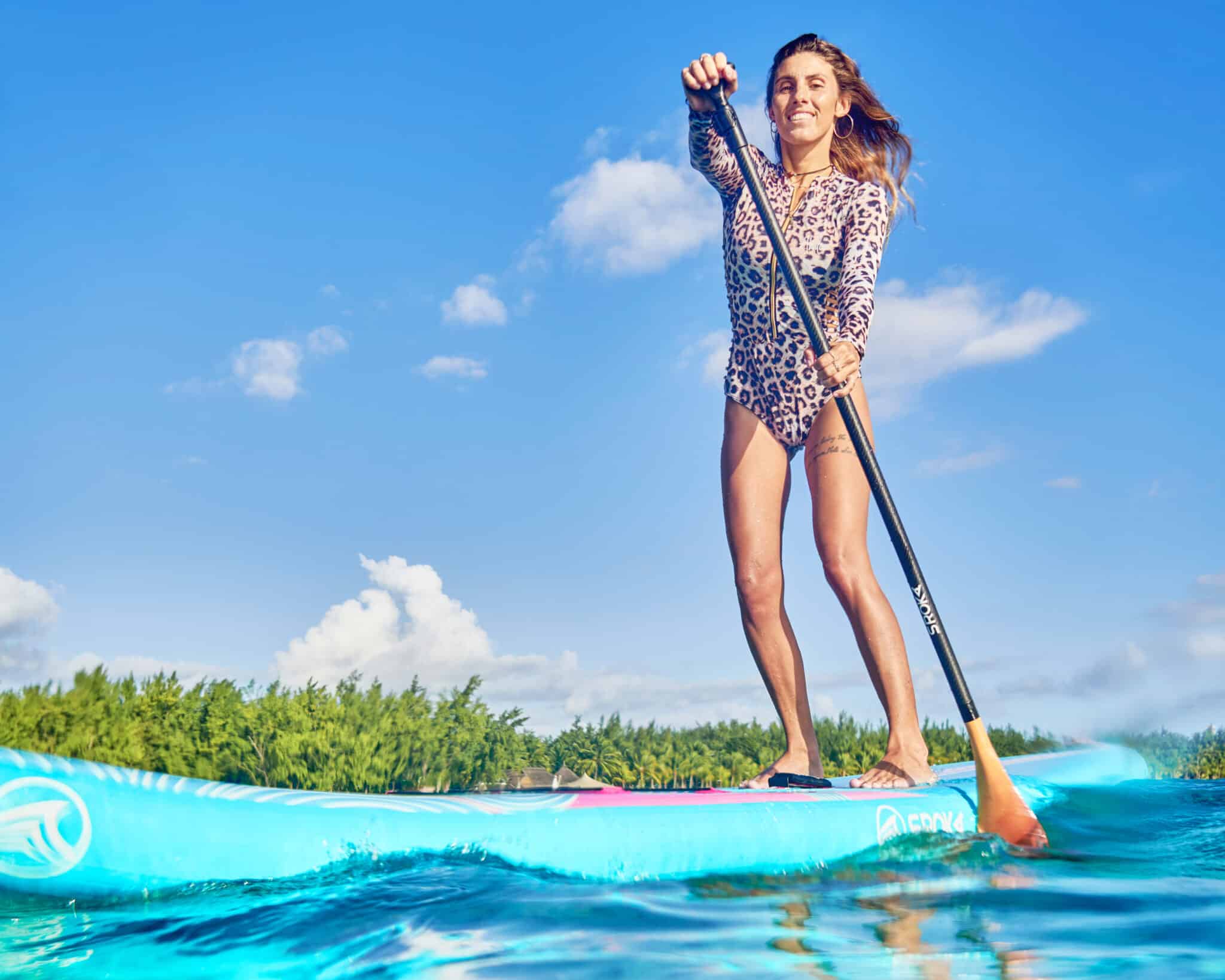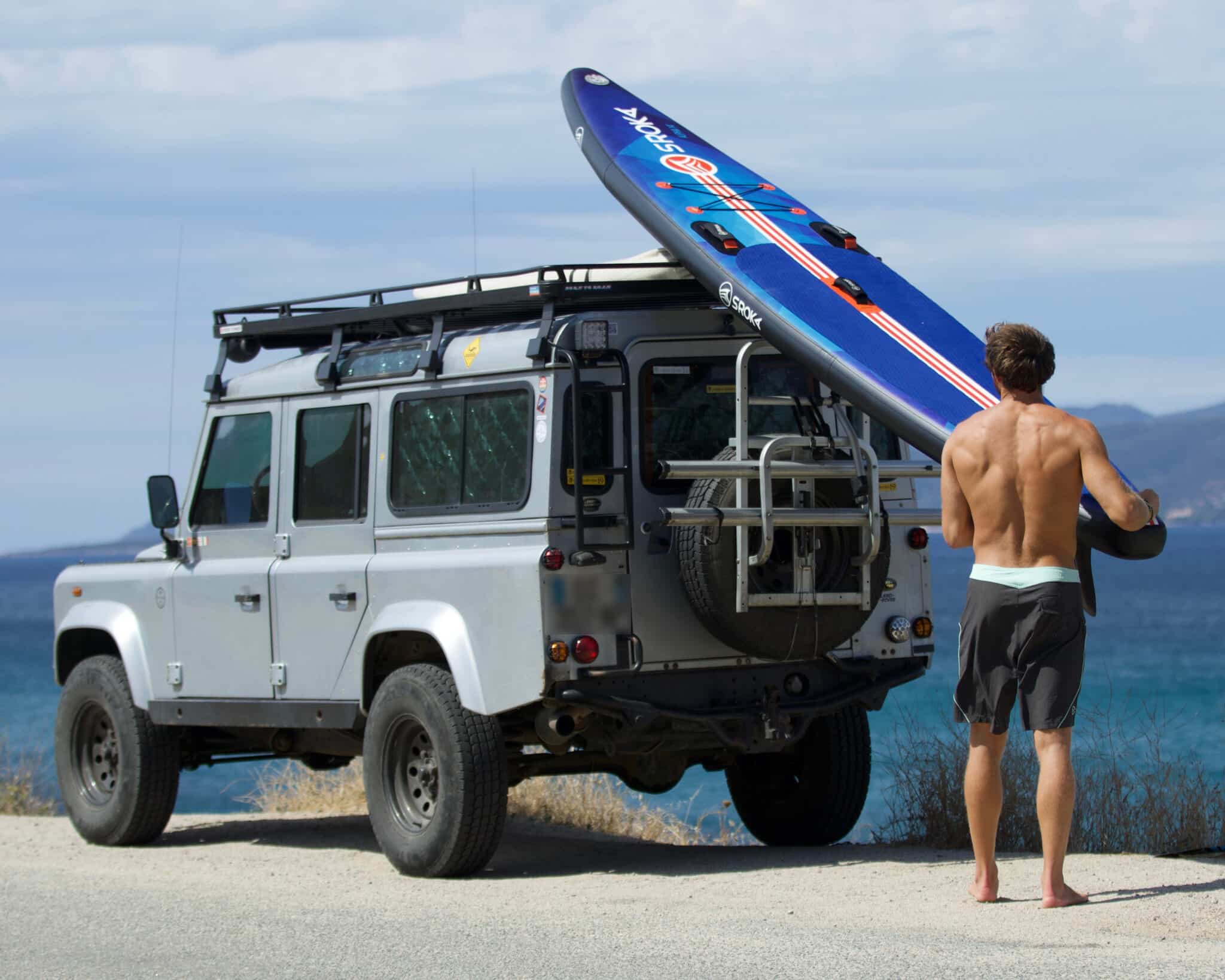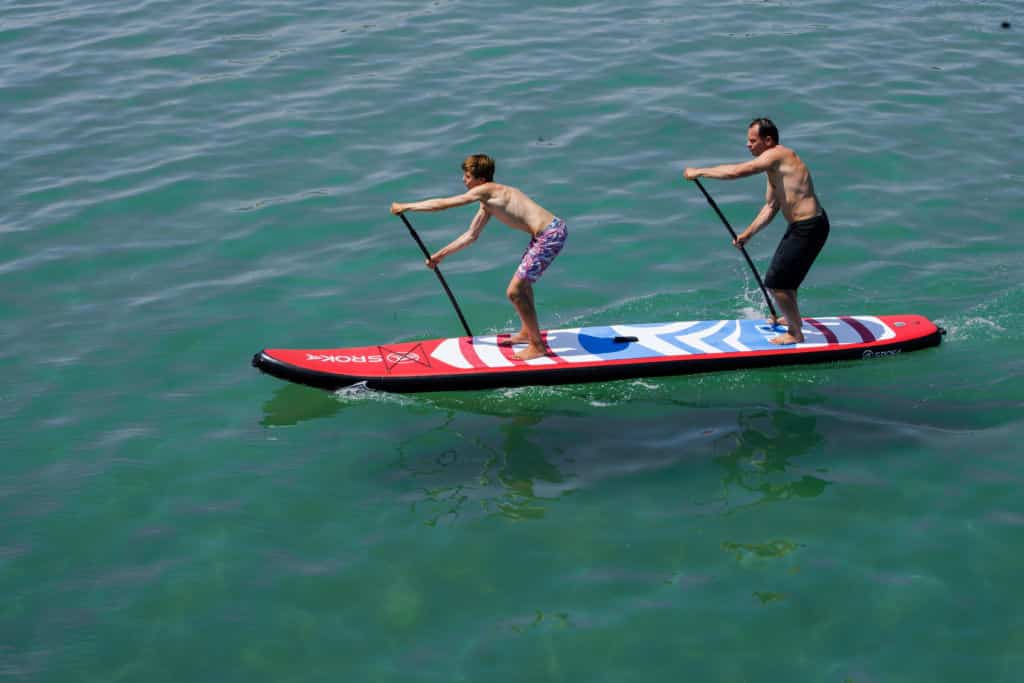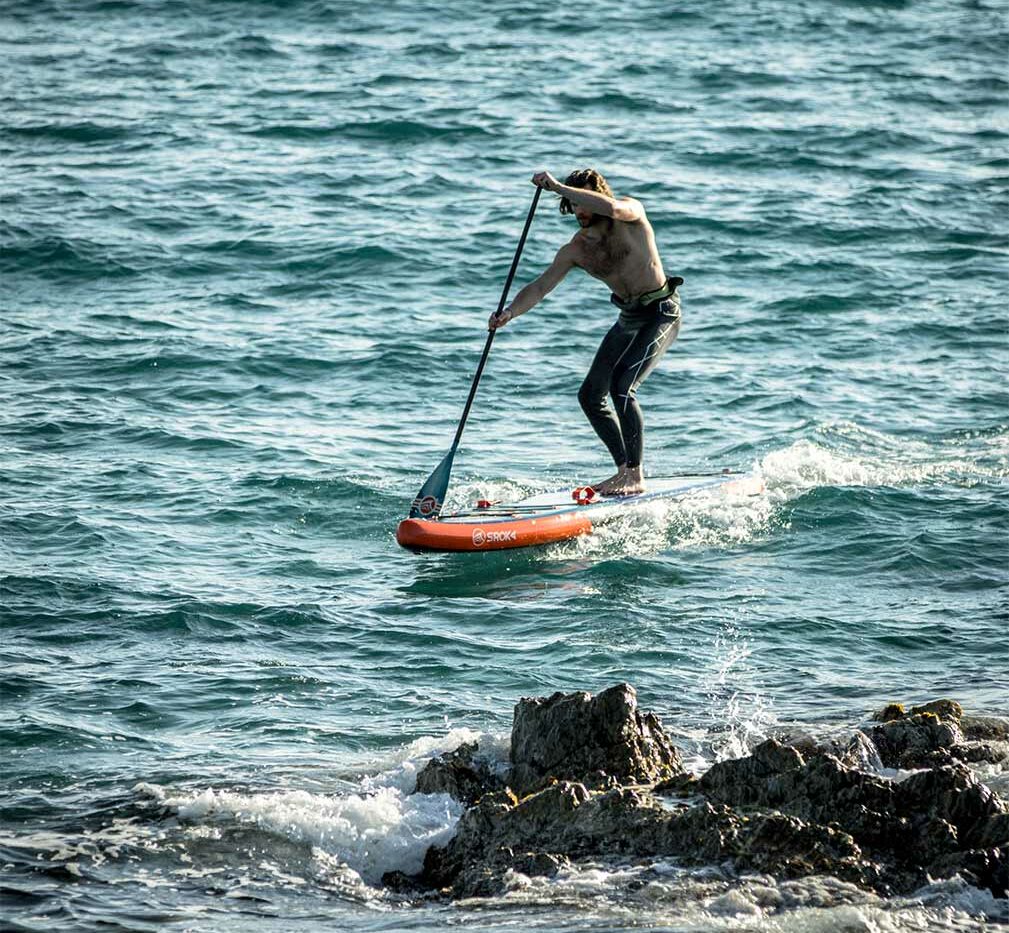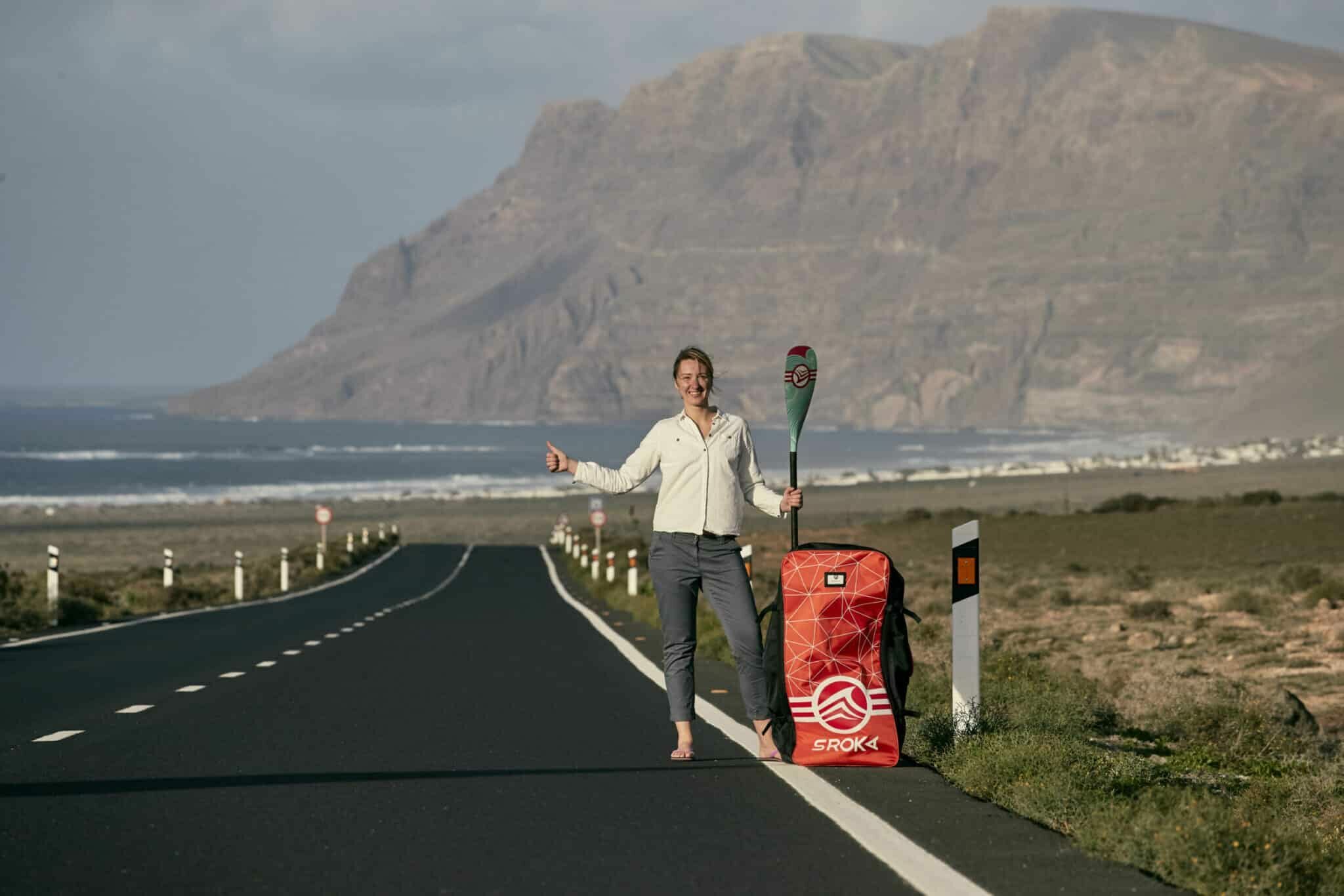 LE MAGAZINE
LE MAGAZINEThe differences between a carbon paddle and an aluminum paddle

In general, we can draw a parallel between the paddle and the car to better understand the differences between materials and performance variations. If the external shape of the car corresponds to that of a paddle, then the car’s motor is equivalent to the paddle. An aluminum paddle is comparable to a small displacement engine, while a carbon paddle represents a powerful, responsive, high-performance motor.
Depending on the type of paddling you do, it’s a good idea toopt for a carbon paddle to optimize performance. In this article, we’ll detail all the features of aluminum and carbon paddles to help you make the right choice for your inflatable stand-up paddle.
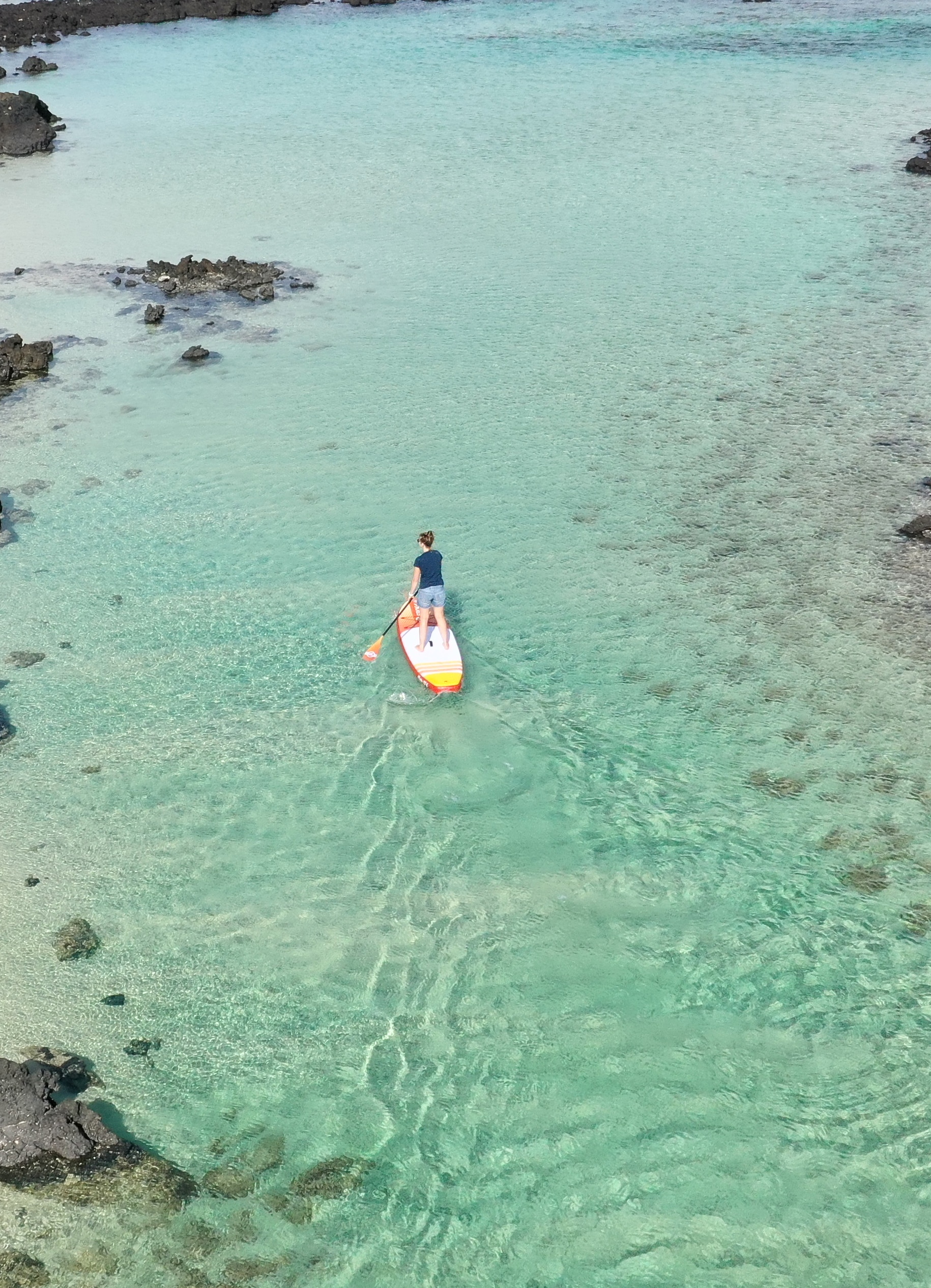
Understanding materials
Aluminium paddle
Advantages :
- The aluminium paddle is affordable, robust and easily accessible.
- It’s perfect for beginners, offering a solid option even if you bump it against rocks.
- Ideal for family use, especially with children, who can play without risk of breakage.
Disadvantages :
- Weight and responsiveness: Aluminum is heavier and less responsive. If you paddle for long periods, you’ll feel the weight getting in the way.
- What’s more, the aluminum paddle lacks responsiveness. When you plunge the blade into the water, the shaft will deform before returning to its normal shape, resulting in a slight reaction time. This reduces efficiency and wastes energy.
An aluminum paddle costs around 60 euros.
The carbon paddle
Advantages: Carbon paddles are renowned for their responsiveness and lightness.
- It offers superior performance thanks to its responsive nature.
- Its light weight facilitates performance, reducing the effort required to cover the same distance.
Like aluminum paddles, carbon paddles are available in different sizes. You can opt for an adjustable paddle, suitable for all body shapes, or for a fixed paddle adjusted to your height.
However, carbon paddles have two major drawbacks:
- their fragility: they are more sensitive to impacts and require special attention.
- their high price: a good carbon paddle costs around 180 euros.

The 50% carbon paddle with a plastic blade: another alternative!
A third alternative is the carbon paddle (generally made up of 50% carbon and the rest fibreglass) with a plastic blade.
This interesting option combines the lightness and responsiveness of a carbon paddle with the strength of a plastic blade, similar to that of aluminum paddles.
The attractive price for this option is around 120 to 130 euros, while offering good performance.
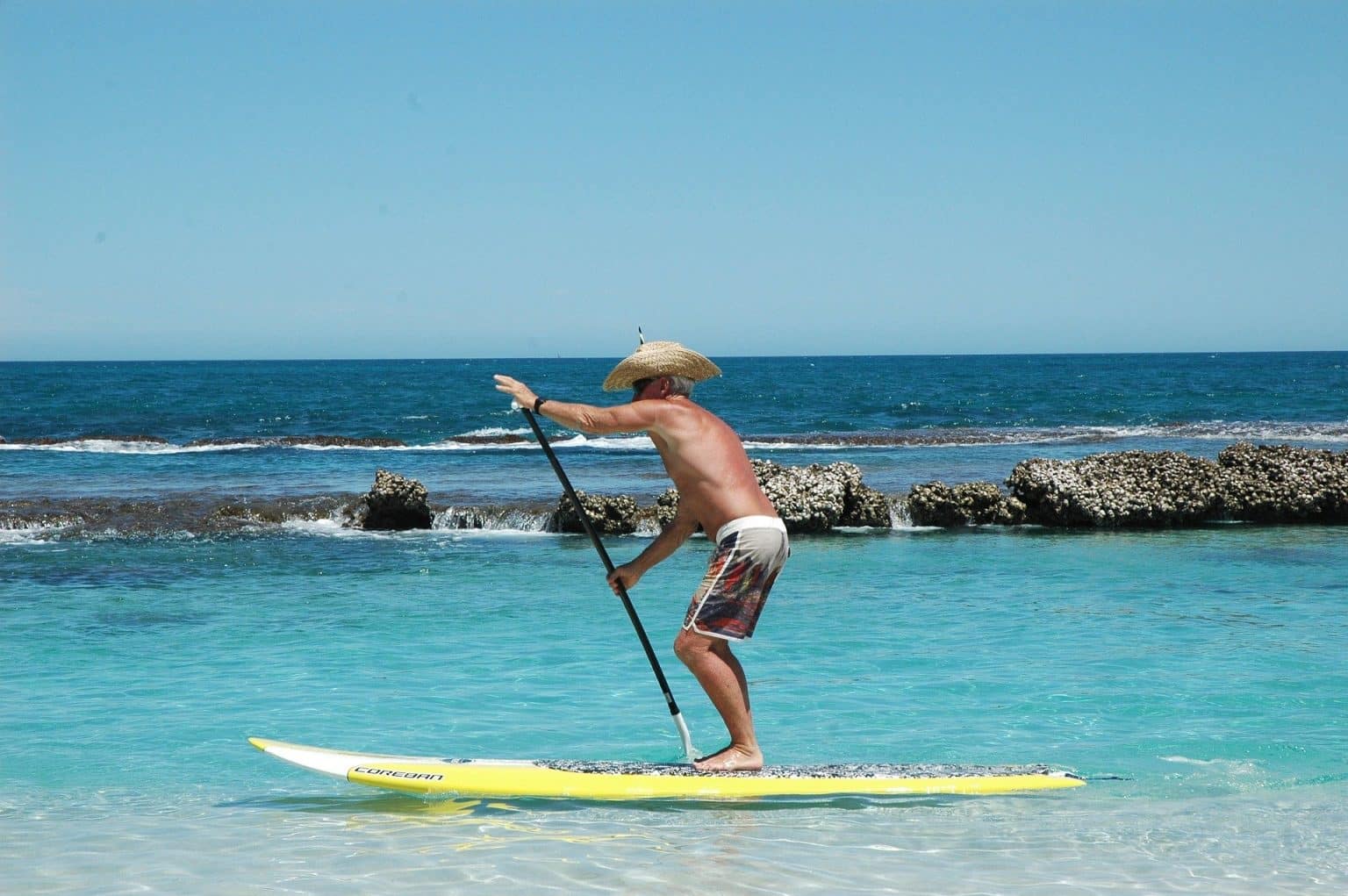
Which paddle is right for you?
- If you’re going on an occasional outing, opt for an aluminum paddle for its sturdiness and affordability.
- For wave paddling, you’ll need a quality carbon paddle, as you’ll need to be responsive and reactive to catch a wave.
- If you’re looking for a performance paddle and/or a long-distance paddle, we advise you to go for a light, responsive paddle, i.e. a carbon paddle. You’ll be able to cover more distance with less effort. You’ll get a better return.
Tips for choosing your paddle
Consider how often you’ll be paddling. If you plan to take to the water regularly, you’ll need a quality paddle. On the other hand, if your outings will be occasional, an aluminum paddle should suffice.
Budget / Price for a paddle
Budget is an essential criterion to consider. Here are a few options:
- Aluminum paddle paddle Price about 60 euros.
- 50% carbon sup paddle with plastic blade Costs between 120 and 130 euros.
- Removable 50% carbon paddle with carbon blade: approx. 180 euros.
- Paddle paddle 60% Carbon: Around 180 euros.
Paddle size
Depending on your discipline (surfing, racing, touring), paddle length will need to be adapted.
- For surfing and racing, a shorter paddle is recommended.
- For walks, you can opt for a slightly larger size.
Things to remember: Your paddle is the equivalent of your car’s engine. The higher its output, the greater your paddling efficiency. Carbon paddles offer the best performance, but have the disadvantage of being more fragile and more expensive. If you’re an occasional paddler, I’d recommend a carbon shaft with a plastic blade as an excellent compromise. On the other hand, if you’re new to paddling, an aluminum paddle will do just fine. Remember that paddles can be changed, but a good paddle will last you a long time without needing to be replaced.
For more information on how to adjust your paddle, we recommend you take a look at this article.
Set off on a paddling adventure, but don’t forget to have fun!
If you have any further questions, or if you have any other requests, please don’t hesitate to contact us!
 Le Magazine
Le Magazine



